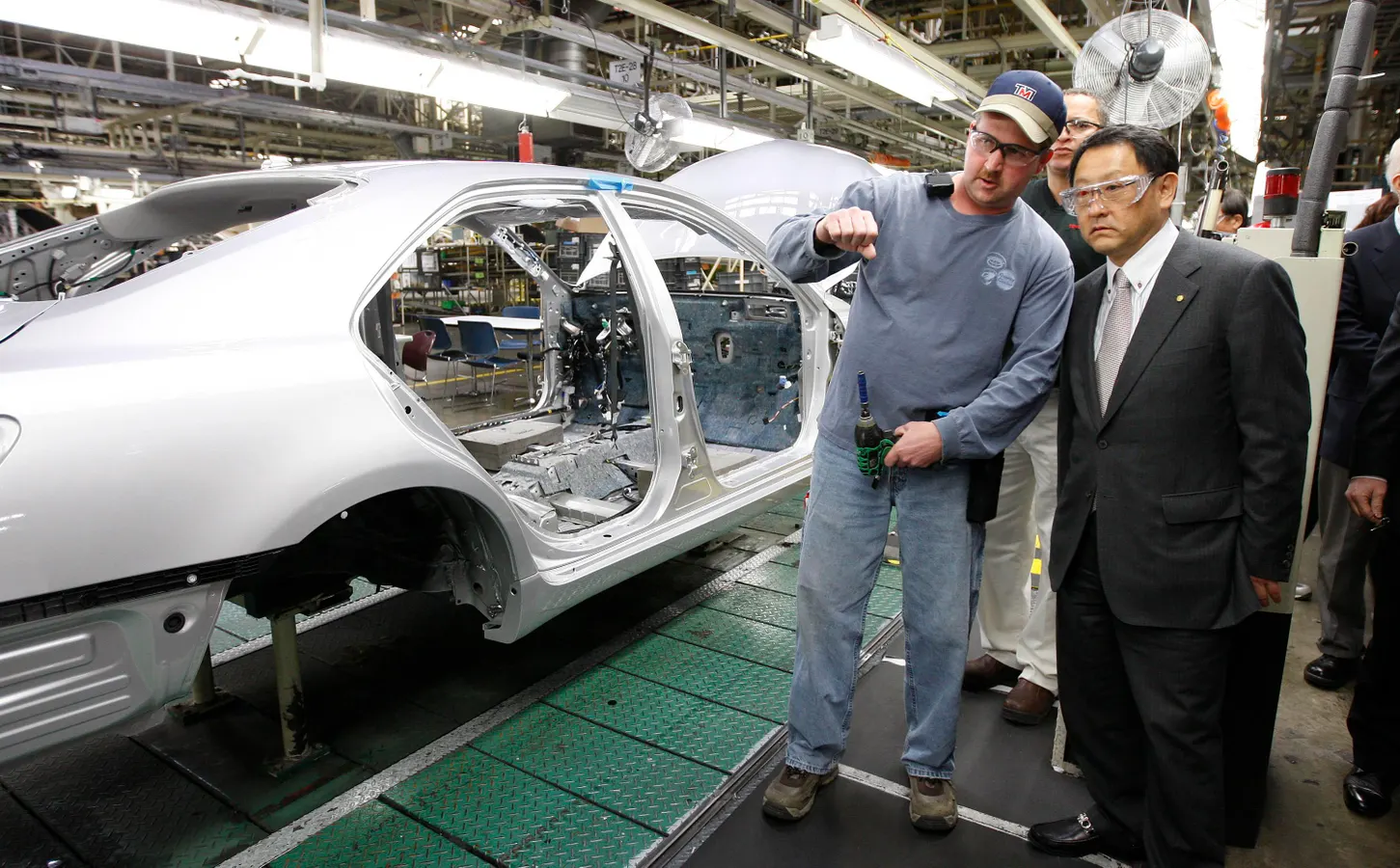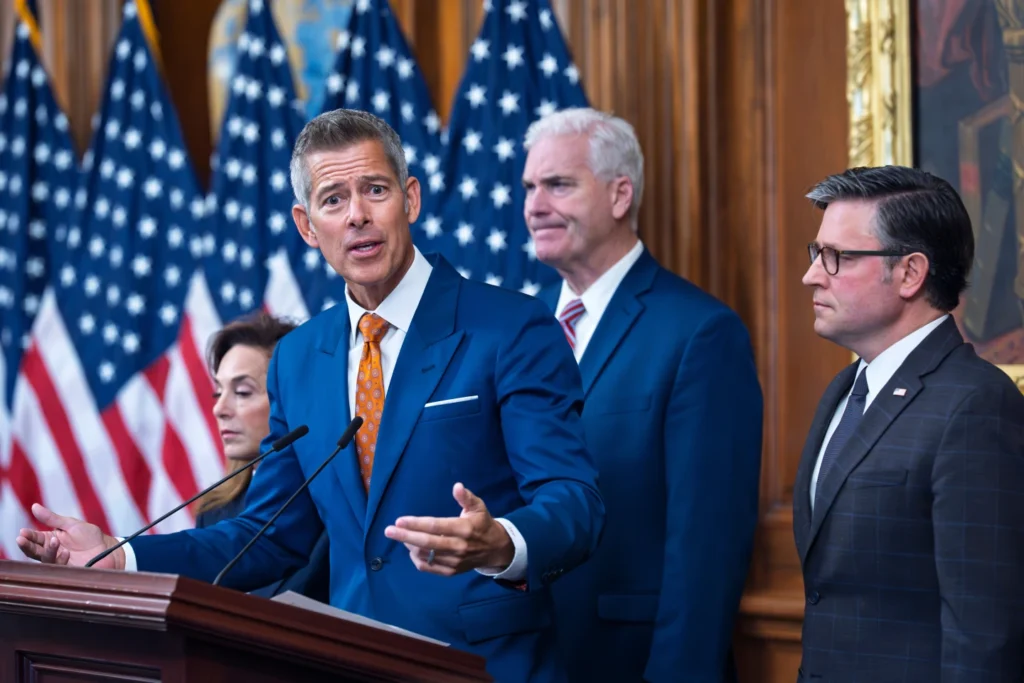
In recent weeks three seemingly disparate headlines have converged into a single thematic tapestry: how legacy, state shutdowns and supply-chain strategy are being reshaped in an age of revived economic nationalism. The players differ—provincial governments, the federal U.S. machinery, global automakers—but the underlying logic is the same: power, commerce and narrative are now inseparable in unexpected ways.
Let us pause to unpack each story in turn, then reflect on what they mean together for the world of trade, governance and meaning in an era of flux.
1. A 1987 Speech, an Ontario Ad and a Trade War with Canada
In late October 2025, the provincial government of Ontario launched a television advertisement in the United States. The ad employed audio from a 1987 radio address by Ronald Reagan to critique tariffs. Within days, the ad triggered a diplomatic flare-up: the Ronald Reagan Presidential Foundation & Institute objected, claiming the ad used “selective audio and video” and misrepresented Reagan’s actual views. Then Donald Trump, privy to the Foundation’s complaints, abruptly announced that all trade negotiations with Canada were terminated. Premier Doug Ford defended the campaign as targeting U.S. voters and promised to phase it out so negotiations might resume.
Why this matters
At first glance this seems like typical political theatre: a government uses a provocative campaign, an opponent flips out, trade talks get suspended, headlines follow. Yet the root of the matter is deeper.
Reagan’s 1987 address—“Radio Address to the Nation on Free and Fair Trade”—was fundamentally a defence of free trade and a warning about tariffs when trading partners violate agreements. The Ontario ad cherry-picked parts of that address in order to draw a straight line between Reagan’s words and Ontario’s complaint over U.S. tariffs. The Reagan Foundation’s objection, however, is that the ad omitted crucial context: namely, Reagan also made explicit that in the case of Japan’s semiconductor trade practices the U.S. had justification to impose tariffs.
From a broader vantage, this is a story of narrative power. The Ontario government recognized that quoting Reagan could give moral and rhetorical weight to its protest—even across national borders. It knew that invoking a revered U.S. President in the media domain of the U.S. might shift public sentiment (or at least disrupt the trade discourse). And Trump knew how to respond: he seized on the accusation of misuse (“fake” ads, etc.) and turned a media campaign into a diplomatic rupture.
Interpretations and implications
- Legacy as resource: Reagan’s words—nearly four decades old—are being re-mined as political currency. The ad suggests that historical rhetoric can be re-activated for contemporary strategic ends. But the risk: when context is lost or omitted, legacy can become contested and partisan.
- Media-driven diplomacy: What started as a television ad becomes the trigger for a national-level trade breakdown. It underscores how in today’s world, communication is fully integrated with diplomacy and trade policy.
- The slippery logic of tariffs: The controversy also highlights the complexity of modern trade. Reagan’s position was not a simplistic “no tariffs ever” stance; he said free trade was preferable but tariffs might be justified when agreements are violated. The ad simplified that nuance—and the Foundation objected.
- Canada-U.S. trade fragility: The incident reveals how fragile relations can be when media campaigns, national pride, and trade policy collide. Canada and the U.S., long allies and heavy trading partners, found themselves in public dispute over an ad.
What it says about our era

This story tells us that the battleground of trade is no longer confined to tariffs and tariffs alone. It is now a battle of images, quotes, legacy and perception. When a regional government in Canada uses a U.S. President’s voice to influence Americans, that is rather novel. It also shows how states are capable of waging policy via media and identity, not just statutory negotiation. For those interested in meaning and narrative, the lesson is clear: economic debate now plays out in rhetorical trenches as much as legislative ones.
2. U.S. Government Shutdown—Day 26 (and counting)
At the same time as the trade headline above, the U.S. federal government entered Day 26 of a shutdown with no resolution in sight. The Senate adjourned for the weekend without passing a funding measure that could reach the 60-vote cloture threshold; in fact, this was the 12th failure of such a measure. Federal workers face mounting uncertainty as paychecks remain suspended and essential programmes strain. Economists warn the shutdown may become the second-longest in U.S. history.
The texture of the shutdown
A shutdown is, in effect, the absence of appropriation. The American budget process demands that Congress pass annual funding or continue via resolutions; failure means many agencies must stop or scale down operations. In this case, the political stalemate is complete: both parties publicly insist the other must yield first, and yet each remains locked in strategic posture.
Consider the human dimension: federal employees are left in limbo—not knowing when their next paycheck may arrive, uncertain about job security, and watching budget talks play out like a game of chicken. It is both administrative paralysis and a moral crisis of governance.
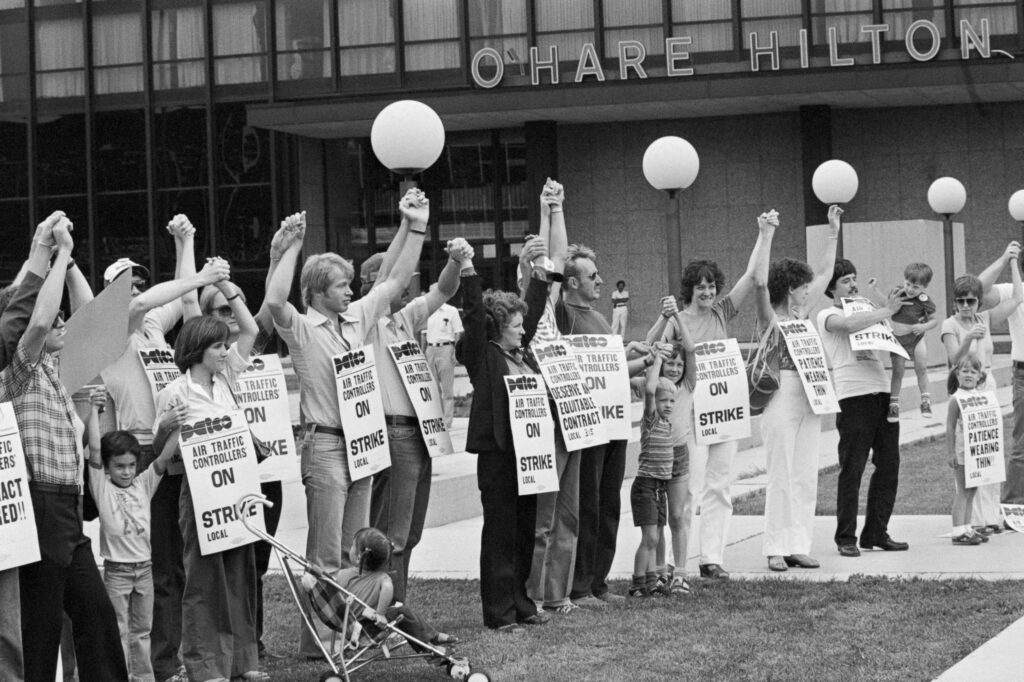
Why it matters
- Public service as leverage: The shutdown shows how public-services become political pawns. The uncertainty inflicted on workers becomes leverage by one side or the other rather than being treated strictly as collateral damage.
- Political theatre meets economic risk: While shutdowns are not new, this one’s length and transparency ratchet the stakes higher. When the Senate repeatedly fails to advance a bill for the 12th time, it reflects deeper dysfunction.
- Risk to national capacity: Shutdowns are not just about paychecks; they cut into defence, transportation, research, civilian services—areas that underpin broader economic and social stability. The longer the impasse, the greater the risk.
- Narrative of broken institutions: For those watching from abroad (and within), the spectacle reinforces a narrative that U.S. institutions are gridlocked, unable to perform basic functions—a perception with international as well as domestic implications.
Linkages to other themes
Here is where a reflective lens matters. Just as media campaigns can escalate trade fights, the breakdown of government functions shows how power is not only about policy but about the capacity to govern. One story is about external trade strategy and narrative; the other is about internal governance failure. Yet both reflect a world where rhetoric, perception and institutional trust have become central to economics and policy.
3. Toyota Motor Corporation’s Planned U.S.-Made Vehicle Imports to Japan
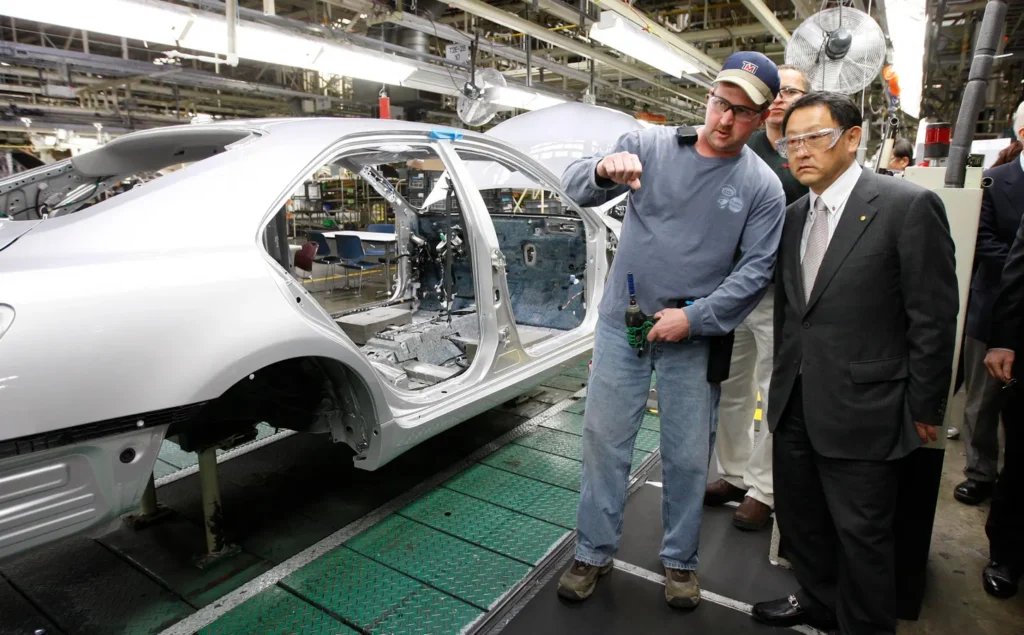
The third story touches the strategic blueprints of global manufacturing. Reports from Reuters and other outlets indicate that Toyota may soon announce a plan to import U.S.-manufactured vehicles into Japan. The move would be accompanied—but perhaps enabled—by regulatory changes allowing U.S.-made cars to be sold in Japan without extra testing. This is framed as part of a broader push by the Japanese government to reduce its trade deficit with the U.S. and ease cross-border regulatory burdens. Analysts suggest that if this plan is realised, it would mark a noteworthy reversal of the longstanding pattern of Japanese-built exports dominating the U.S. market.
Why this matters
To understand the significance, one must remember the history of auto trade. Japan’s post-war automotive ascendance was often framed as a challenge to U.S. manufacturers—and at the heart of that was the U.S.-Japan trade imbalance and import restrictions. When Toyota exports primarily Japanese-built vehicles to the U.S., the story is about Japanese manufacturing strength. But the reversal—U.S.-made vehicles for the Japanese market—signals a shift.
Strategic implications
- Supply-chain realignment: If Toyota begins to import U.S.-made vehicles into Japan, it speaks to new configurations of production: North America not just as an export platform, but as a feeder to other markets.
- Regulation as trade lever: The regulatory changes in Japan reflect how non-tariff barriers (testing, approval, standards) are now as much a part of trade strategy as duties themselves. Analysts note that Japan has agreed to ease non-tariff barriers to support increased U.S. vehicle exports.
- Trade deficit optics: Japan’s trade deficit with the U.S. is a political issue. By facilitating U.S.-made vehicle imports, Japan may seek to reduce its negative trade balance—or at least signal cooperation to its ally. The data show the U.S. goods deficit with Japan in the recent years has been substantial.
- Symbolic inversion: More than the economics, there is symbolism here: a marquee Japanese automaker importing U.S. manufacturing back to Japan unsettles long-held assumptions. It suggests that globalisation is entering a new phase—less unidirectional, more networked, more strategic.
Wider readings
This story invites reflection on how manufacturing today is not purely cost-driven but geopolitically configured. Governments and firms are aligning to optimise not just efficiency but diplomatic optics. Toyota’s potential move may well be as much a signalling device as a commercial strategy. In that sense, it links back to the first two stories—about narrative, institutional capacity and trade as more than numbers.
The Synthesis: What It All Means
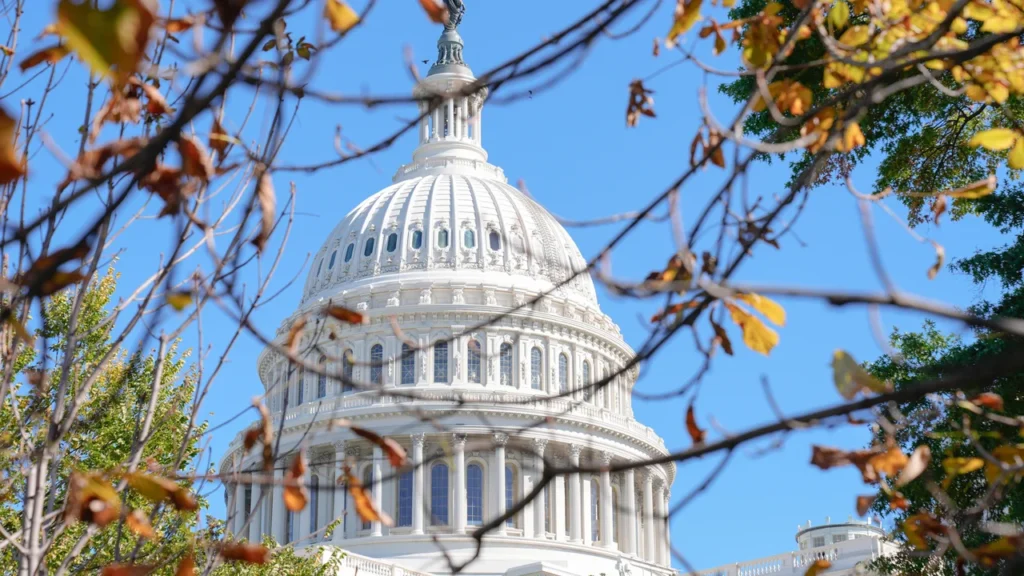
Having laid out the three threads, let’s turn to what they collectively tell us about the contemporary moment.
Trade and narrative are now inseparable
The Ontario-Reagan episode made plain that trade policy is no longer simply about tariffs or volumes. It is about story-telling—about legacy, about moral premise (“free trade vs protectionism”), about who commands the rhetorical high ground. When a regional government deploys a 1987 speech to influence current trade policy, we see how the battle over meaning matters as much as the battle over goods.
Institutions matter—but their authority is contested
The U.S. government shutdown underscores the fragility of institutional authority when negotiation breaks down. The inability to fund essential operations weakens the legitimacy of the state and shifts the burden onto citizens and public-servants. Meanwhile, the Reagan Foundation stepping into a trade dispute suggests that non-state actors (foundations, think-tanks) increasingly play roles once reserved for formal diplomacy.
Manufacturing is evolving from global to glocal
Toyota’s potential U.S.-to-Japan supply-chain pivot shows that manufacturing strategy is not about lowest-cost site then ship globally. It is about interpreting trade politics, national relationships, regulatory regimes and signalling strategic alignment. Globalisation is not dead—but it is shifting from purely economic calculus to geopolitically textured networks.
The personal and the public merge
Whether we speak of a provincial ad campaign, furloughed federal workers, or imported vehicles, the stakes are human. Workers lose pay, citizens face institutional paralysis, firms recalculate where production happens. Behind every headline are lives and livelihoods. The narratives of trade and shutdowns are not abstract—they reach into kitchens, factories, offices and public-service desks.
Meaning creation in uncertain times
For a lay-person like the “Forever Sophist” (to borrow your own moniker), these stories invite reflection on deeper existential questions. If meaning is not handed to us, but created—then we might ask: What do we make of a world where trade rhetoric becomes warfare, where governance implodes through paralysis, and manufacturing geography is rewired by diplomacy? The challenge is to build frameworks that make sense of such turbulence—not by denying it, but by navigating it.
Practical Insights for Observers and Actors
Given the complex insights above, what might we advise for someone trying to make sense of these developments? Here are a few take-aways:
- Watch narratives as closely as numbers
When trade announcements or shutdown debates appear, do not stop at the tariff percentage or vote count. Ask: What tone is the rhetoric taking? Who is being quoted? What historical legacy is being invoked? The Ontario-Reagan affair is a case in point. - Institutions aren’t inert background, they are actors
Don’t assume that state institutions will always function smoothly. Shutdowns remind us that institutions can fail, stall or become part of the story themselves. This means risk-assessment must include institutional fragility. - Global supply chains need geopolitical literacy
Manufacturing decisions are no longer just about cost minimisation. They reflect regulatory, diplomatic and strategic considerations. Businesses and observers must map trade corridors in more than cost-curves—they must map alliances and narratives too. - Meaning-making becomes a skill
For individuals, professionals, citizens trying to navigate such an era, the ability to create provisional frameworks of meaning is vital. If trade is not just about goods but about identity; if shutdowns are not just budget holes but trust holes; and if supply-chain pivots are not just shipping routes but strategic statements—then the meaning we make of them matters. - Stay attentive to the human dimension
Beyond policy and strategy lies human consequence. Workers without pay, regions dependent on trade, firms facing regulatory whiplash. A level-headed observer keeps the human stake in mind—not for sentiment’s sake, but because systems only function when people do.
A Concluding Reflection
Trade, governance and global supply chains once seemed to belong to separate domains. One dealt with goods, another with budgets, another with production lines. Today they are interwoven. A sixty-second television ad quoting Reagan peregrinates across borders and upends negotiations. Budget paralysis in Washington ripples into the economy, into people’s lives and into the perception of institutional capacity. A Japanese automaker’s decision to import U.S.-made vehicles becomes a nod to diplomacy, regulation and symbolic reversal.
What does this mean for an individual seeking to make meaning in the chaotic interplay of forces? It means that our frameworks must adapt. Meaning cannot be a static block anchored in some old idea of trade or governance. It must become dynamic, attentive, alert to the interplay of narrative, policy and consequence. It must recognise that our age less often presents tidy storylines of progress or collapse—and more often exposes hybrid forms: a legacy speech turned into a modern ad, an institution designed to uphold stability locked in crisis, a global automaker realigning manufacturing in the service of geopolitics.
The deeper invitation is this: to recognise our role as watchers, interpreters and participants in these systems—not as aloof observers but as engaged meaning-makers. We do not simply look at headlines; we trace the intersections, the currents, the ripple-effects. And in so doing we build our own frameworks of clarity, resilience and purpose. The world may be unsettled—markets shaky, politics fractious, narratives contested—but our capacity to understand and act need not cede ground.
In short: we live in a world where trade ads can pause negotiations, where shutdowns can erode infrastructure, where manufacturing flows can shuffle continents. There is no longer a firewall between narrative and policy, between governance and economy. For the thoughtful observer—and the committed actor—this is not cause for despair but for sharpened vigilance. We must craft our meaning in an era where the stage is global, the players many, and the script perpetually being rewritten.

